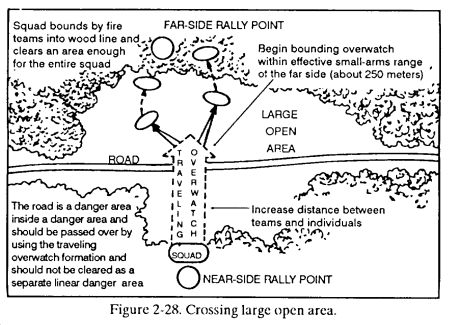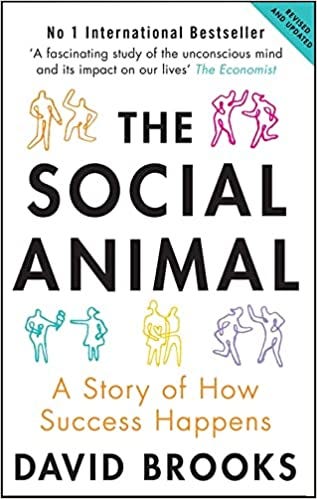Think.
I’m thinking about the far side of fear.
Fear lives in a tiny house. It’s the size of a walnut. The walnut is called the amygdala and is a part of our mammalian brain. It is responsible for the five ‘Fs’
Freeze, Flee, Fight, Feed, and …Procreate. We’ll focus on the first three. They are the possible responses to fear.
We avoid things that scare us. It’s understandable. Fear makes us uncomfortable, and for good reason, that’s its job. To warn us. To tell us to take the easier path, not to become too invested, or try too hard, or give too much.
Fear developed to protect us.
By freezing in place, we could remain unseen by a predator.
By fleeing, we could live to fight another day.
By fighting when required we could survive, get food, and a mate, and build and protect a family.
Those who listened to their fear survived, and so evolutionarily, its power grew.
But now fear of monsters and imminent death on a regular and recurring basis is less of a daily concern for most of us. Now our amygdala looks for new threats. It would prefer to keep us in a state of stasis. The best way to stay safe is to do nothing. Change is hard.
Last week I related our journey through life to a recon patrol in the military. To continue this analogy, let’s discuss danger areas. On a patrol, a danger area is a place along the route where you may be exposed to enemy observation or fire. Think of an open field or a roadway. Once you come out of the tree line, you are exposed.
In life, the danger area is the precipice of change.
A common danger area is fear of failure
I’ve talked about the fixed mindset. It would have us believe that we are not capable or deserving of better, or that we don’t have the strength or power, or fortitude to do the things we want to do.
A fixed mindset evokes fear of the possibility of change.
The fixed mindset says it’s ok to not do things that you don’t want to do - even when that thing is beneficial.- The antidote to this is the goal.
It will tell you that you shouldn’t do things when you don’t want to do them - The antidote to this is discipline.
And it will claim that if you are going to do the thing, it’s ok half-ass it, because then it can say, See? I told you it wouldn’t work.” - The antidote to this is intensity and a firmly fixed sky anchor.
Fear of failure is bad, but it is not the worst thing.
Another danger area is the fear of success
We fear being successful because we know that if we are, it will bring about other changes. If you start working out regularly then you will decide to improve your diet, increase sleep, and surround yourself with like-minded people. Sort of like a positive Diderot effect, or if you are a parent, imagine what might happen “If you Give a Mouse a Kettlebell” instead of a cookie.
Positive change breeds positive change. This is just as true as the inverse.
When faced with these danger areas we could stop, turn back, or falter where “…the plains of hesitation bleach the bones of countless millions who, at the dawn of decision, sat down to wait, and waiting die.” (George Cecil)
Or we can establish a far-side Rally Point, tell the amygdala, “Today, we’re fighting.” and step boldly into the unknown.
Everything you want exits on the far side of fear: confidence, power, empowerment, growth, accomplishment, and ability. Everything you have wanted but have been too afraid to fight for.
Don’t you think it’s time?
Read. What I’m reading.
The Social Animal by David Brooks
OK, I’m a little late with this one. It came out ten years ago, but I just read it and couldn’t put it down. This book is a fascinating look at who we are, and how we come to be that way. It is told through the life story of the fictitious characters, Harold and Erica. Brooks pieces together a multi-disciplinary primer that “explains what brain research has revealed about the influence of the unconscious mind on our actions. He illustrates these ideas through a fictional story of two ordinary people who led lives fulfilled, not by intelligence, wealth, or prestige but through the character and street smarts developed in the unconscious realm of emotions, intuitions, and social norms.”
Write.
I haven’t mentioned my memoir in progress, Tough, Rugged, Bastards for a while. That is at least partially because I haven’t been working on it as much as I should be. But the other day when I sat down and committed to work, I entered what Mihaly Csikszentmihalyi called the Flow State. Words were pouring out onto the page, and more often than not they made sense. Everything else slipped away and when I happened to glance at the clock, I thought it had been inadvertently set to Greenwich Mean Time. Hours had passed away while I sat contentedly plugging away.
Flow is a topic I am fascinated by. I have written about it and undoubtedly will do so again, but in a nutshell it exists at the intersection of challenge and skill. When we are challenged just beyond our ability level in an engaging task we can find flow.
So if Calliope continues to smile on my efforts and I am able to recreate the flow state, you will be able to pre-order your own copy of Tough, Rugged, Bastards in 2023.
Repeat.
Words of wisdom from those who said it best:
“I must not fear. Fear is the mind-killer. Fear is the little death that brings total obliteration. I will face my fear. I will permit it to pass over me and through me. And when it has gone past I will turn the inner eye to see its path. Where the fear has gone there will be nothing. Only I will remain.” ~ Frank Herbert (Dune)
Cowards die many times before their deaths; the valiant never taste of death but once. - William Shakespeare
Fear has its use, but cowardice has none. - Gandhi
Fear is the path to the dark side. Fear leads to anger. Anger leads to hate. Hate leads to suffering. - Yoda
I’d love to hear about a fear you have overcome.
If you enjoyed this, please share it with a friend.











Great article John. Would you say that Imposter Syndrome falls under fear?